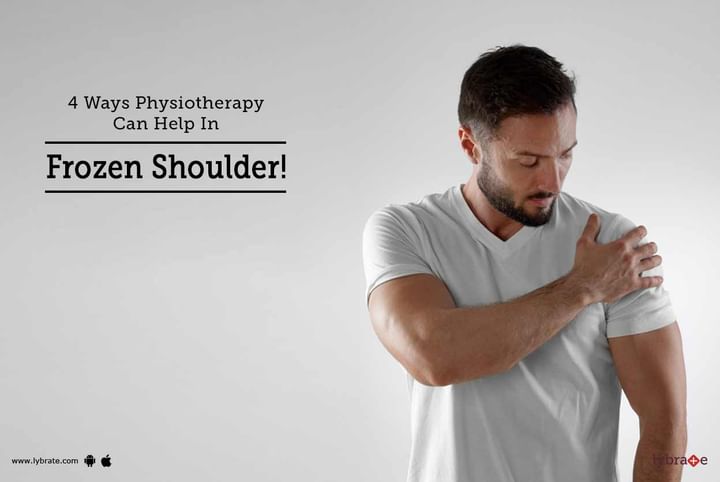4 Ways Physiotherapy Can Help In Frozen Shoulder!
Frozen shoulder is a condition when somebody encounters continuous shoulder stiffness and pain. It could last for weeks. It is likely to occur when swelling increases around the shoulder which reduces inability to move or stretch properly. This ordinarily happens when somebody is recovering from an injury. Frozen shoulder at times happens when somebody is wearing a sling or a cast. It also occurs, if someone is recovering from surgery, experiencing joint pain or facing restraint of movement for other reasons.
A frozen shoulder can go on from a couple of months to as much as 3 years and the precise cause is unknown. Physiotherapy is often to treat this condition. It has been found that posture plays a huge part in your recovery from a frozen shoulder. The urgent goal is to get the shoulder join moving once again. The sooner this is done, the better are the odds of a quick recovery. Anti-inflammatory medicines, heat application and delicate stretching activities are performed with the assistance of a physiotherapist.
Physiotherapy is very crucial for a frozen shoulder since it is very difficult to get movement in the stiff joint without any exercise, stretching or other methods used by a physiotherapist. It is mostly crucial to get physiotherapy to:
- To reduce pain in the shoulder
- To increase the flexibility and strength of the shoulder
- To enhance movement of the shoulder.
- To increase endurance of the muscles
Physiotherapy treatment for a frozen shoulder depends on the stage you are on and is customized according to the needs of your condition. Physiotherapy treatments for a frozen shoulder include:
- Pain relief: Pain diminishing techniques including gentle shoulder movement exercises, muscle releases, needle therapy, dry needling and kinesiology taping for pain can help during the painful swelling phase.
- Defrosting: Shoulder mobilization and stretching are the best in order to achieve a full shoulder recovery. As your scope of movement increases, your physiotherapist will then be able to give you muscle strengthening exercises to control and keep up your recently found range of movement.
- Warm Up: Before beginning shoulder exercises for a frozen shoulder, try to warm up your shoulder keeping in mind the end goal. That is to help blood supply in the affected area and avoid future injuries. The best approach is to extend and warm up the shoulder by applying heat for 10 to 15 minutes, scrubbing down or showering with Epsom salt.
Physiotherapy does not bring out immediate results, but gradually. Flexibility will increase gradually. One should keep in mind, not to stretch their shoulder too quickly at once. This can lead to a ligament tear. The exercises should be tender and gradual.



+1.svg)
